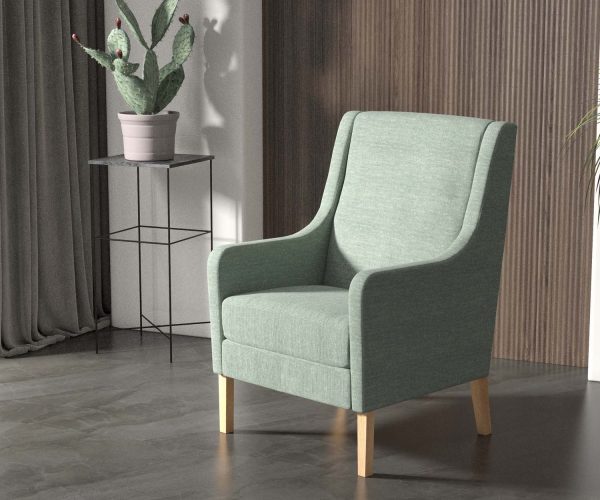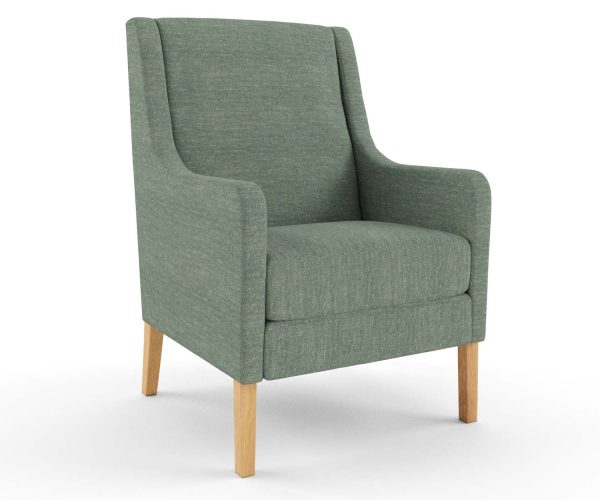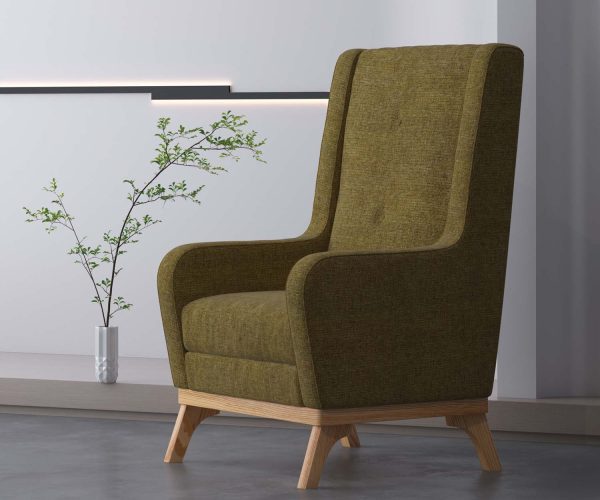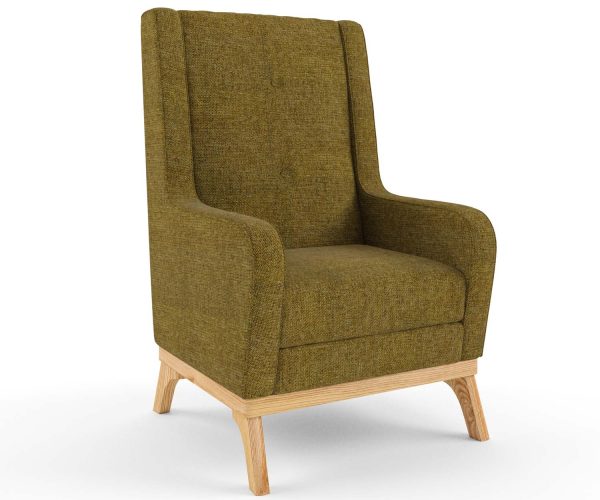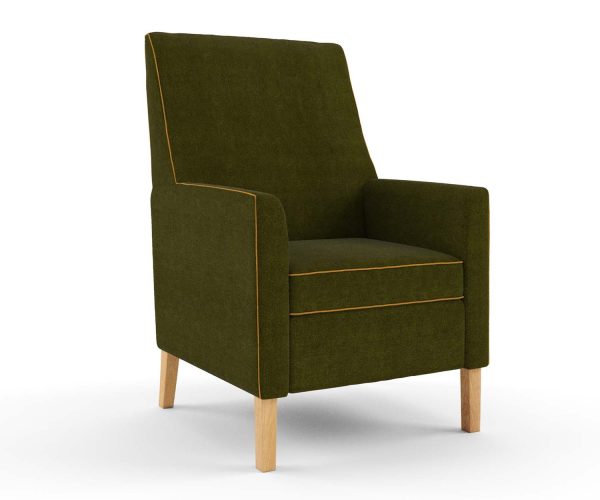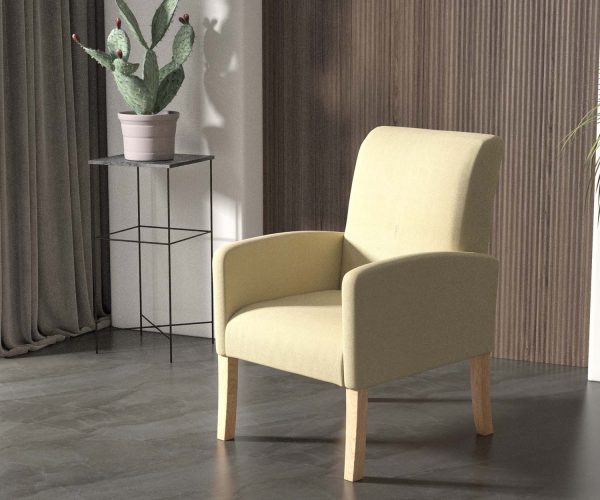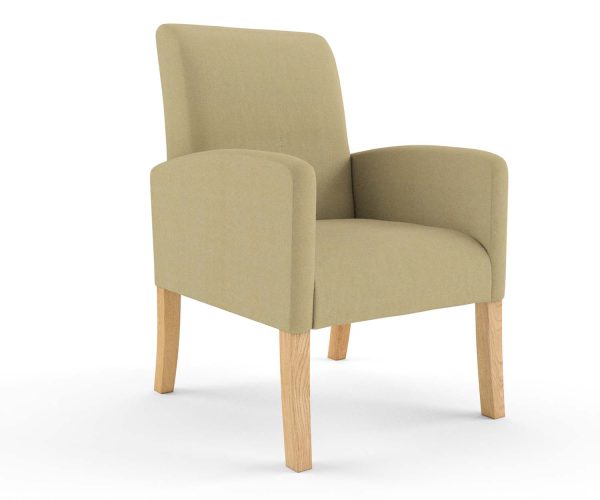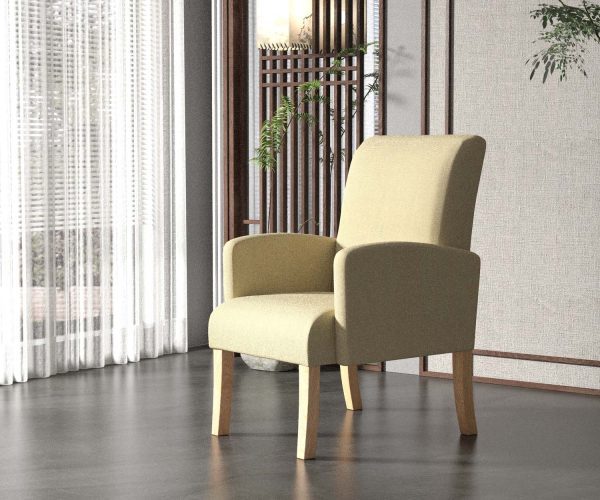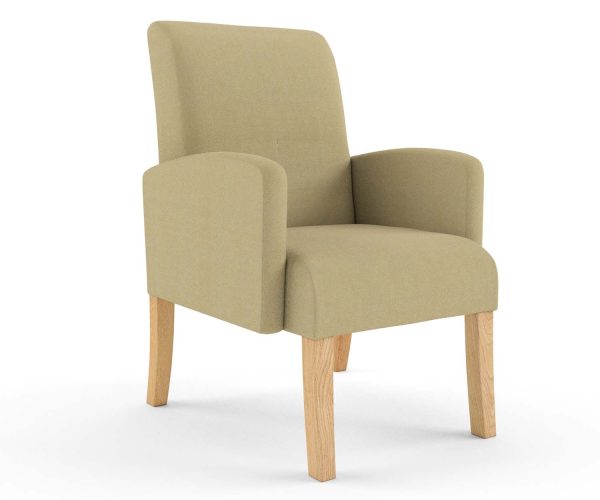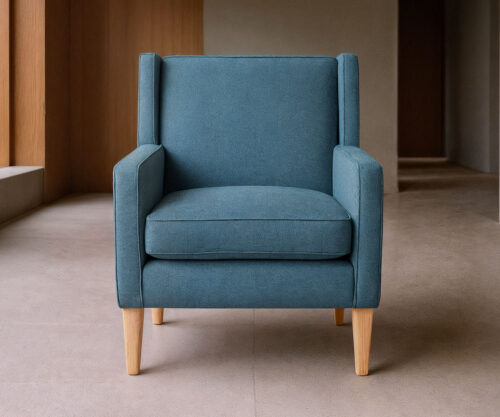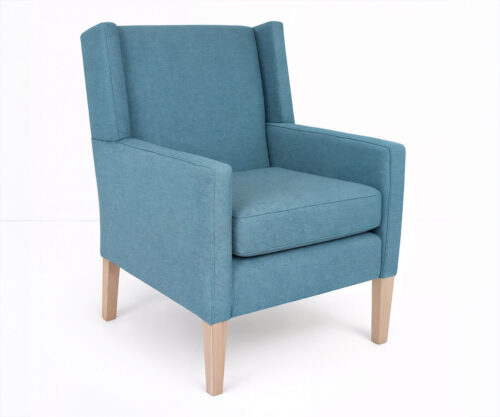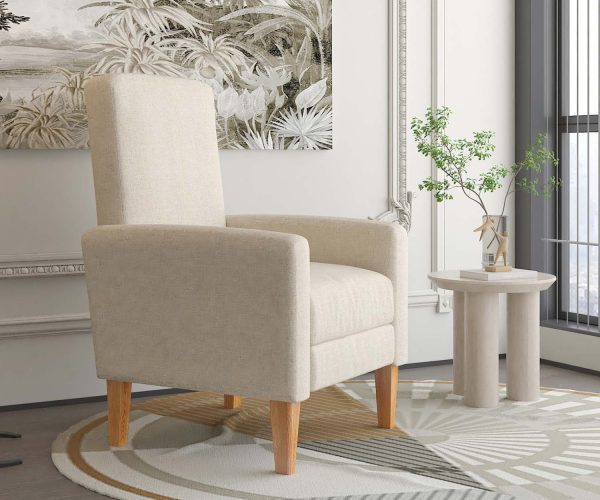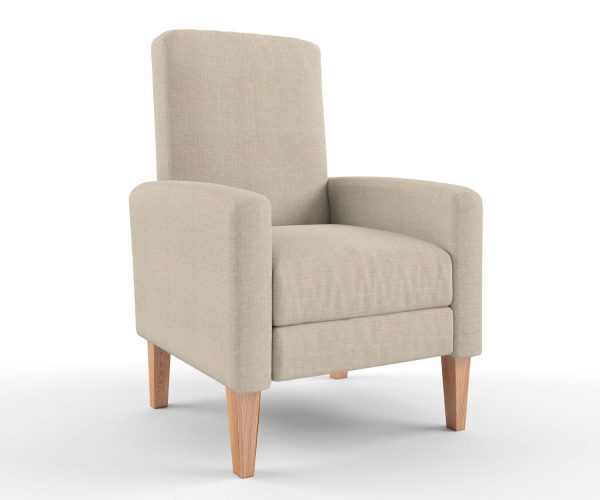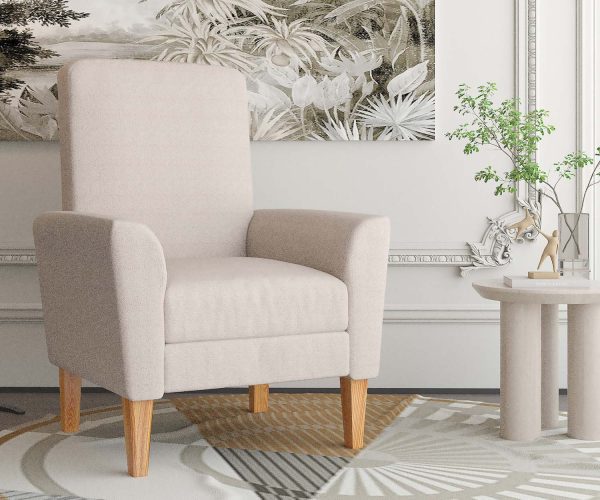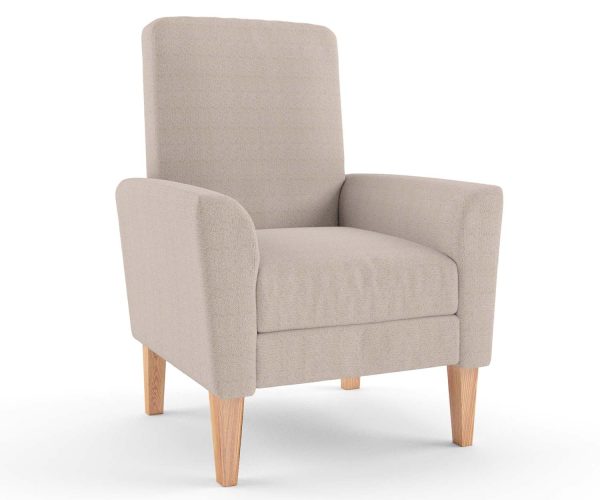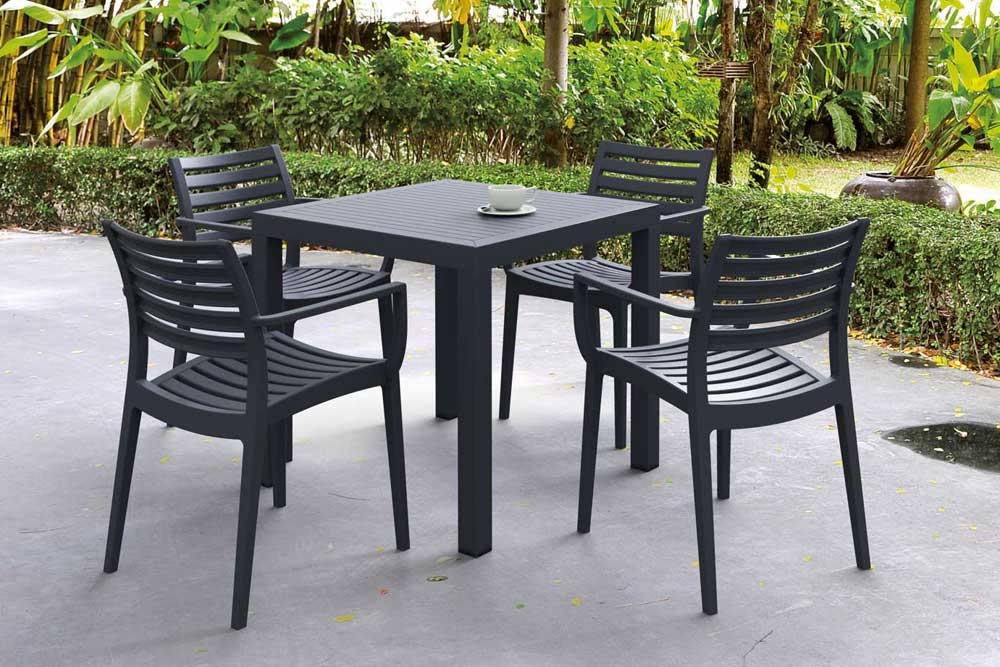Australia’s National Aged Care Design Principles and Guidelines: Design Principle 1 – Enable the Person

Note: This article continues our series on summarising the Australia’s National Aged Care Design Principles and Guidelines. See also: Design Principle 2 – Cultivate a Home and Design Principle 3 – Access the Outdoors.
When it comes to creating a comfortable and supportive environment for seniors living in residential aged care, one principle stands above all: Design Principle 1 – Enable the Person. In this blog post, we’ll delve into the first design principle of Australia’s National Aged Care Design Principles, which focuses on enhancing the quality of life for elderly residents in aged care homes. These guidelines aim to maintain their health, well-being, and sense of identity.
Aged Care Design Principle Objective: To support people living in a place that maintains their health, wellbeing and sense of identity
The primary goal of this design principle is to support people living in aged care homes while ensuring their health, well-being, and sense of identity are maintained. As individuals age and their care needs increase, transitioning to an aged care facility can be challenging due to sensory stimulations and unfamiliar surroundings. Thoughtful environmental design can significantly alleviate these challenges and enhance residents’ physical, cognitive, and psychosocial well-being.
Desired Outcomes: A Familiar and Supportive Environment
These guidelines apply to all areas within an aged care home, including resident living spaces, access routes, and communal areas. They aim to expand upon existing regulatory requirements to better address the needs of elderly residents. The ultimate goal is to create an environment that is both familiar and supportive, adapting to residents’ changing needs over time.
Let’s now take a closer look at the 11 essential guidelines that fall under Design Principle 1: Enable the Person.
1.1 Personalised Home
Guideline: Encourage residents to decorate their living spaces with items from their own lives, making the entire home more familiar and comfortable. Design rooms with open shelving for personalization.
1.2 Minimal Clutter
Guideline: Minimize visual clutter in resident areas by removing or discreetly storing items that do not serve a specific purpose. Keep the spaces clean and uncluttered.
1.3 Acoustic Comfort
Guideline: Improve the acoustic environment by eliminating or dampening noise sources, separating noisy areas from quiet ones, and using soft furnishings for noise absorption.
1.4 Clean Air
Guideline: Monitor and maintain air quality within the building. Ensure cross-ventilation by opening windows and doors. Address air quality issues by consulting with mechanical engineers when necessary.
1.5 Brighter Lighting
Guideline: Design lighting to suit older eyes, balancing the need for more light with glare control. Provide task lighting in activity areas and allow residents to control lighting.
1.6 Tonal Contrast
Guideline: Use contrasting tones to make key surfaces and objects easier to see, enhancing visibility for residents. Avoid reflective surfaces that may cause confusion.
1.7 Simple Circulation
Guideline: Create simple, easily navigable layouts without excessive signage or dead ends. Ensure that bedrooms have a clear line of sight to common areas.
1.8 Safe Floors
Guideline: Promote level access both indoors and outdoors. Prioritize high-quality healthcare carpet and low-sheen vinyl in specific areas. Maintain consistent floor finishes throughout.
1.9 Supportive Seating
Guideline: Provide ample seating, especially in corridors. Ensure that seating is comfortable, robust, and domestic in style, accommodating different needs and preferences.
1.10 Stress-free Toilets
Guideline: Make toilets easy to find, use, and recognize. Specify user-friendly fittings and ensure a good size for comfort and staff assistance.
1.11 Comfortable Temperatures
Guideline: Maintain a temperature range of 20–26°C year-round. Assess temperature risks in different areas of the building and plan accordingly, considering residents’ unique needs.
By incorporating these guidelines into the design and operation of aged care homes, we can create environments that prioritize the comfort, well-being, and dignity of the residents. These changes can range from simple, cost-effective adjustments to more substantial features, making them adaptable to both existing and new facilities.
In the end, the aim is clear: to ensure that elderly residents feel at home and receive the support they need to lead fulfilling lives in their later years.
FAQs About the Importance of a Familiar and Supportive Environment in Aged Care
Why is a familiar and supportive environment considered crucial in aged care?
A familiar and supportive environment is crucial in aged care as it promotes a sense of security, reduces stress, and enhances the overall well-being and quality of life for elderly individuals.
How does a familiar environment contribute to the emotional well-being of aged care residents?
A familiar environment, which includes familiar faces, surroundings, and routines, helps reduce anxiety, promote emotional stability, and provide a sense of comfort for aged care residents.
What role does familiarity play in addressing cognitive impairments, such as dementia, among aged care residents?
Familiarity is particularly important for residents with cognitive impairments as it can reduce confusion, agitation, and disorientation, providing a more stable and supportive environment for their care.
How can aged care facilities create a familiar environment for residents?
Aged care facilities can create a familiar environment by incorporating personal memorabilia, maintaining consistent routines, and involving residents in decision-making regarding their living spaces and daily activities.
What are the benefits of a supportive environment for the physical health of aged care residents?
A supportive environment promotes physical health by reducing stress, providing easy access to necessary resources, and offering a comfortable and safe space for residents to engage in daily activities.
How does a supportive environment contribute to social interactions among aged care residents?
A supportive environment fosters social interactions by creating spaces that encourage residents to gather, engage in activities, and build relationships, thereby reducing feelings of loneliness and isolation.
Can a familiar and supportive environment enhance the effectiveness of care provided by staff in aged care facilities?
Yes, a familiar and supportive environment enhances the effectiveness of care by enabling staff to understand residents’ preferences, needs, and behaviors more thoroughly, leading to more personalized and compassionate care.
What impact does a supportive environment have on the autonomy and independence of aged care residents?
A supportive environment encourages autonomy and independence by providing residents with the necessary support and resources to engage in activities of daily living, fostering a sense of empowerment.
How can families contribute to creating a familiar and supportive environment for their loved ones in aged care?
Families can contribute by providing personal items, participating in care planning, and maintaining regular communication with staff to ensure that the care environment aligns with the preferences and needs of their loved ones.
Are there challenges to maintaining a familiar and supportive environment in aged care, and how can they be addressed?
Challenges may include staff turnover, adapting to changing resident needs, and facility renovations. These challenges can be addressed by implementing ongoing staff training, involving residents and families in decision-making, and maintaining open communication channels within the facility.
Australian Made Furniture that Follows the Australian National Aged Care Design Principles and Guidelines
Aged care chairs should be both supportive (Guideline 1.9 – Supportive Seating) and appropriate (Guideline 2.8 – Appropriate Furniture).
More News
Australia’s National Aged Care Design Principles and Guidelines: Design Principle 1 – Enable the Person

Note: This article continues our series on summarising the Australia’s National Aged Care Design Principles and Guidelines. See also: Design Principle 2 – Cultivate a Home and Design Principle 3 – Access the Outdoors.
When it comes to creating a comfortable and supportive environment for seniors living in residential aged care, one principle stands above all: Design Principle 1 – Enable the Person. In this blog post, we’ll delve into the first design principle of Australia’s National Aged Care Design Principles, which focuses on enhancing the quality of life for elderly residents in aged care homes. These guidelines aim to maintain their health, well-being, and sense of identity.
Aged Care Design Principle Objective: To support people living in a place that maintains their health, wellbeing and sense of identity
The primary goal of this design principle is to support people living in aged care homes while ensuring their health, well-being, and sense of identity are maintained. As individuals age and their care needs increase, transitioning to an aged care facility can be challenging due to sensory stimulations and unfamiliar surroundings. Thoughtful environmental design can significantly alleviate these challenges and enhance residents’ physical, cognitive, and psychosocial well-being.
Desired Outcomes: A Familiar and Supportive Environment
These guidelines apply to all areas within an aged care home, including resident living spaces, access routes, and communal areas. They aim to expand upon existing regulatory requirements to better address the needs of elderly residents. The ultimate goal is to create an environment that is both familiar and supportive, adapting to residents’ changing needs over time.
Let’s now take a closer look at the 11 essential guidelines that fall under Design Principle 1: Enable the Person.
1.1 Personalised Home
Guideline: Encourage residents to decorate their living spaces with items from their own lives, making the entire home more familiar and comfortable. Design rooms with open shelving for personalization.
1.2 Minimal Clutter
Guideline: Minimize visual clutter in resident areas by removing or discreetly storing items that do not serve a specific purpose. Keep the spaces clean and uncluttered.
1.3 Acoustic Comfort
Guideline: Improve the acoustic environment by eliminating or dampening noise sources, separating noisy areas from quiet ones, and using soft furnishings for noise absorption.
1.4 Clean Air
Guideline: Monitor and maintain air quality within the building. Ensure cross-ventilation by opening windows and doors. Address air quality issues by consulting with mechanical engineers when necessary.
1.5 Brighter Lighting
Guideline: Design lighting to suit older eyes, balancing the need for more light with glare control. Provide task lighting in activity areas and allow residents to control lighting.
1.6 Tonal Contrast
Guideline: Use contrasting tones to make key surfaces and objects easier to see, enhancing visibility for residents. Avoid reflective surfaces that may cause confusion.
1.7 Simple Circulation
Guideline: Create simple, easily navigable layouts without excessive signage or dead ends. Ensure that bedrooms have a clear line of sight to common areas.
1.8 Safe Floors
Guideline: Promote level access both indoors and outdoors. Prioritize high-quality healthcare carpet and low-sheen vinyl in specific areas. Maintain consistent floor finishes throughout.
1.9 Supportive Seating
Guideline: Provide ample seating, especially in corridors. Ensure that seating is comfortable, robust, and domestic in style, accommodating different needs and preferences.
1.10 Stress-free Toilets
Guideline: Make toilets easy to find, use, and recognize. Specify user-friendly fittings and ensure a good size for comfort and staff assistance.
1.11 Comfortable Temperatures
Guideline: Maintain a temperature range of 20–26°C year-round. Assess temperature risks in different areas of the building and plan accordingly, considering residents’ unique needs.
By incorporating these guidelines into the design and operation of aged care homes, we can create environments that prioritize the comfort, well-being, and dignity of the residents. These changes can range from simple, cost-effective adjustments to more substantial features, making them adaptable to both existing and new facilities.
In the end, the aim is clear: to ensure that elderly residents feel at home and receive the support they need to lead fulfilling lives in their later years.
FAQs About the Importance of a Familiar and Supportive Environment in Aged Care
Why is a familiar and supportive environment considered crucial in aged care?
A familiar and supportive environment is crucial in aged care as it promotes a sense of security, reduces stress, and enhances the overall well-being and quality of life for elderly individuals.
How does a familiar environment contribute to the emotional well-being of aged care residents?
A familiar environment, which includes familiar faces, surroundings, and routines, helps reduce anxiety, promote emotional stability, and provide a sense of comfort for aged care residents.
What role does familiarity play in addressing cognitive impairments, such as dementia, among aged care residents?
Familiarity is particularly important for residents with cognitive impairments as it can reduce confusion, agitation, and disorientation, providing a more stable and supportive environment for their care.
How can aged care facilities create a familiar environment for residents?
Aged care facilities can create a familiar environment by incorporating personal memorabilia, maintaining consistent routines, and involving residents in decision-making regarding their living spaces and daily activities.
What are the benefits of a supportive environment for the physical health of aged care residents?
A supportive environment promotes physical health by reducing stress, providing easy access to necessary resources, and offering a comfortable and safe space for residents to engage in daily activities.
How does a supportive environment contribute to social interactions among aged care residents?
A supportive environment fosters social interactions by creating spaces that encourage residents to gather, engage in activities, and build relationships, thereby reducing feelings of loneliness and isolation.
Can a familiar and supportive environment enhance the effectiveness of care provided by staff in aged care facilities?
Yes, a familiar and supportive environment enhances the effectiveness of care by enabling staff to understand residents’ preferences, needs, and behaviors more thoroughly, leading to more personalized and compassionate care.
What impact does a supportive environment have on the autonomy and independence of aged care residents?
A supportive environment encourages autonomy and independence by providing residents with the necessary support and resources to engage in activities of daily living, fostering a sense of empowerment.
How can families contribute to creating a familiar and supportive environment for their loved ones in aged care?
Families can contribute by providing personal items, participating in care planning, and maintaining regular communication with staff to ensure that the care environment aligns with the preferences and needs of their loved ones.
Are there challenges to maintaining a familiar and supportive environment in aged care, and how can they be addressed?
Challenges may include staff turnover, adapting to changing resident needs, and facility renovations. These challenges can be addressed by implementing ongoing staff training, involving residents and families in decision-making, and maintaining open communication channels within the facility.
Australian Made Furniture that Follows the Australian National Aged Care Design Principles and Guidelines
Aged care chairs should be both supportive (Guideline 1.9 – Supportive Seating) and appropriate (Guideline 2.8 – Appropriate Furniture).
Commercial furniture by room
Based in Brisbane, we’re an Australian manufacturer of aged care furniture, retirement living furniture, hospital & healthcare furniture, hotel & accommodation furniture and student accommodation furniture. We also supply a range of commercial office furniture.
Discover the FHG Look Book: Your Source of Inspiration for Quality Australian-Made Commercial Furniture
- Quality Craftsmanship: See why we’ve been a trusted partner for over 25 years.
- Local Excellence: Learn how our Brisbane team ensures the highest standards.
- Inspiration and Ideas: Find innovative furniture solutions for any environment.
Don’t miss the opportunity to transform your commercial space with FHG’s expertly crafted furniture. Download the FHG Look Book today and start your journey towards exceptional design and quality.

